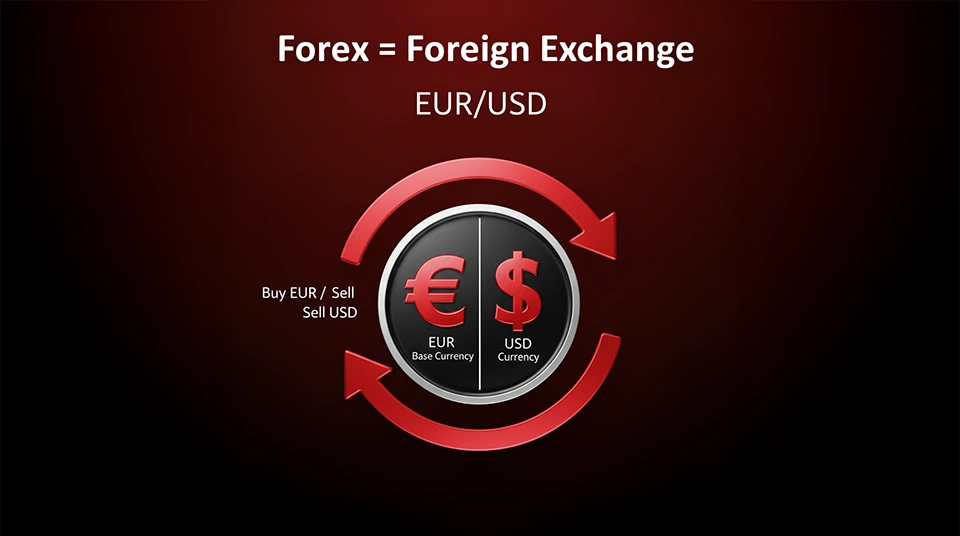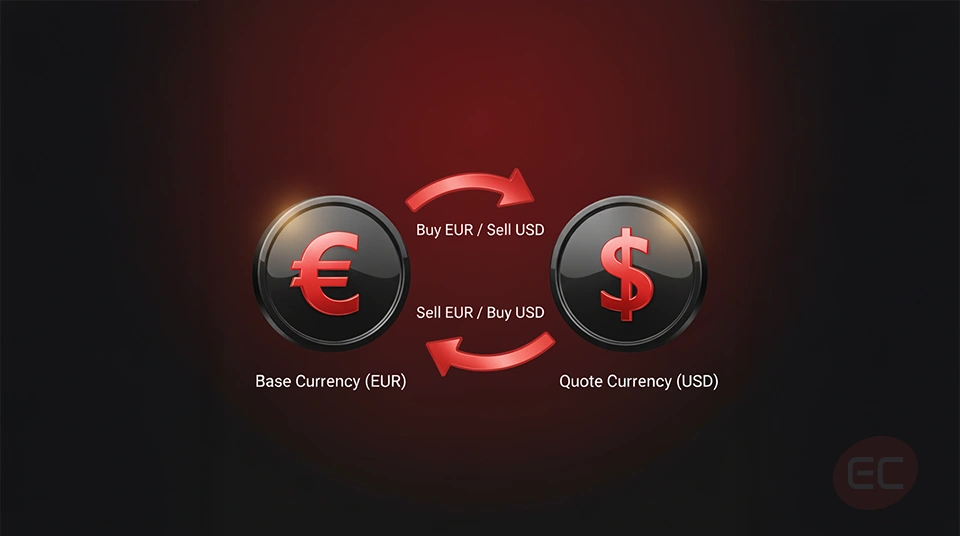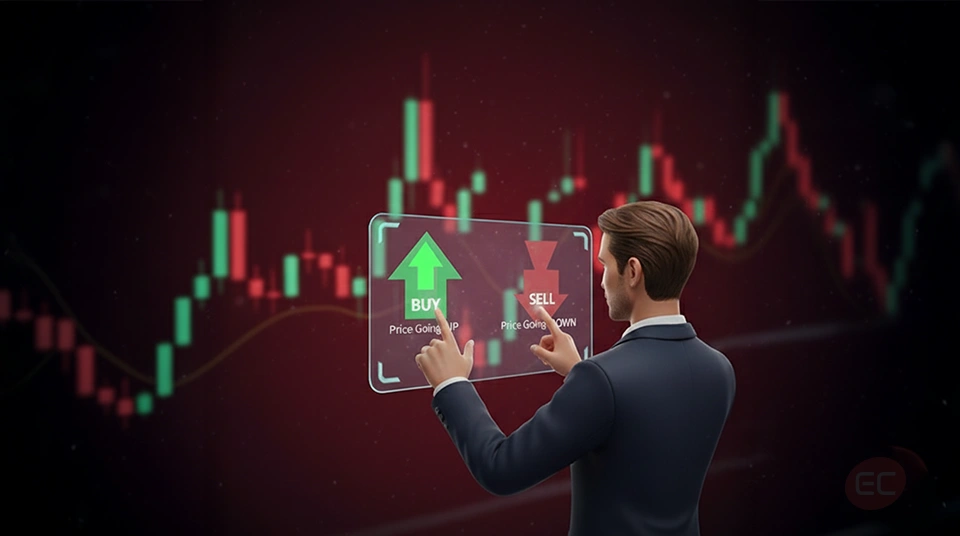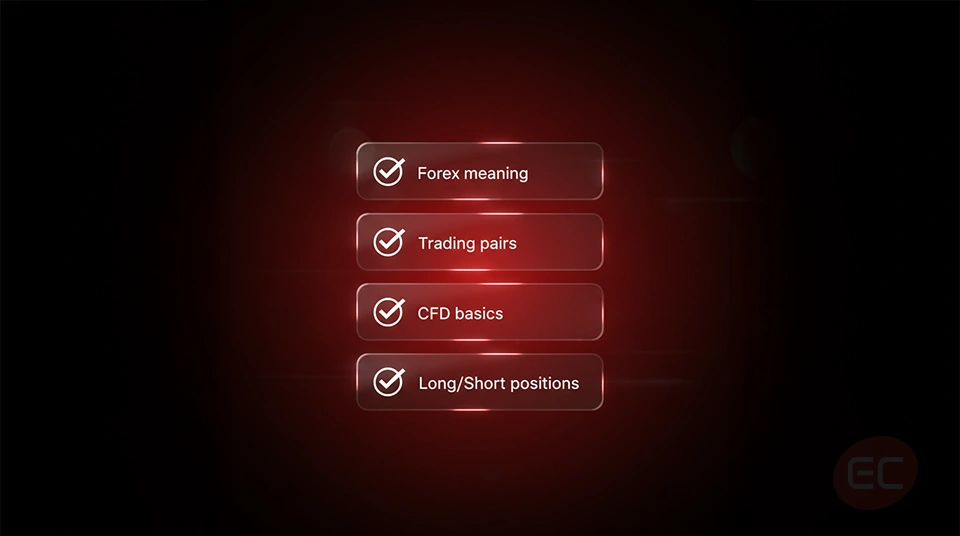What is Forex Trading and How Does It Work?
Have you ever asked yourself questions like: What is Forex Trading and how does it work or how does currency trading work? Well, Likely you’ve already participated in forex trading without even realising it. Have you ever travelled abroad and exchanged money for another currency? If so, then you’ve already dipped your toes into trading forex. The difference is, some people exchange currencies for travel purposes and some for profit. So, what is forex trading and how does it work? We're about find out, as well as understand the CFD trading meaning, what CFD definition trading is and explore a forex trading example. Let’s dive into it!
- What is Forex?
- What is Forex Trading and How does it work: Currency Trading
- What is Forex Trading and How does it work: Major, Minor and Exotic Currency Pairs
- What is Forex Trading and How does it work: CFD Trading meaning
- What is Forex trading and how does it work: CFD Definition Trading
- What is Forex trading and How does it work: The Benefits of CFD Trading
- Conclusion: Let’s wrap it up!
- Key takeaways - What is Forex Trading and How Does It Work?
What is Forex?

1) The meaning of Forex
Understanding what is Forex trading and how it works is crucial to making informed trading decisions. The meaning of Forex is simple, it’s short for foreign exchange. It’s the process of exchanging one currency for another. The forex market is the largest and most liquid financial market in the world with trillions of dollars traded every single day. For a forex trading example - let’s say the euro will go up in value compared to the US dollar, you would want to buy euros and sell them later for a profit, that’s the main principle of forex trading. Sounds relatively straightforward? Well it is, but more factors come into play which we will now look into.
Forex can create immense opportunities for traders, but understanding how the market fluctuates is crucial to making the right trading move. Forex is greatly influenced by 3rd party elements, including global news, politics, economics and even natural disasters. All these elements drastically change the value of currencies, making some currencies stronger and some weaker, but if you do the right research and understand the market movements enough - you can create a great trading opportunity.
What is Forex Trading and How does it work: Currency Trading
Now that we’ve explored the basics, let’s go deeper into what is forex trading and how does it work when applied to different types of currency pairs. Let’s look at some key topics:
Currencies are always traded in forex pairs, meaning that you are buying one currency and selling another currency. Each pair consists of:
- A base currency (the first currency listed)
- A quote currency (the second currency listed)
In the case of EUR/USD, Euro is the base currency and Dollar is the quote currency. As a forex trading example, If you are trading EUR/USD at 1.10, it means that one Euro is worth 1.10 US Dollars. If you think that the Euro will increase in value over the Dollar, you would want to buy EUR/USD, on the other hand, if you think the Euro will decrease in value over the Dollar, you would want to sell it.

Let's look closely at a forex trading example:
Here’s a simple forex trading example, going back to EUR/USD, assuming you bought EUR/USD at 1.10, a few days went by and the price moved to 1.15, that means that the Euro got stronger against the dollar, if you sold at that moment, in this forex trading example you would have made a profit! Let’s break our forex trading example down some more:
- Assuming you bought 1,000 EUR/USD at 1.10 = $1,100
- Price rises to 1.15
- Sell = $1,150
- Profit = $50
If you’ve made it this far into the course, then you’ve covered the main foundation of Forex trading! But like most things, great profits can also bring losses, and it’s crucial to educate yourself on the forex market before making any financial decisions. Let’s look into the types of currency pairs.
What is Forex Trading and How does it work: Major, Minor and Exotic Currency Pairs
There are different types of currency pairs: major pairs, minor pairs and exotic pairs, here are some examples of each:
- Major pairs: EUR/USD, USD/JPY, GBP/USD
- Minor pairs: EUR/GBP, GBP/JPY
- Exotic pairs: USD/TRY, USD/ZAR
Choosing the right type of currency pair is one of the most important decisions a forex trader can make. Each pair comes with its own risks, volatility and trading behavior, so let’s break it down:
1) Major Pairs
Major pairs are often classed as the most popular and stable currency pair. Here are some examples of major pairs:
- EUR/USD (Euro / US Dollar)
- USD/JPY (US Dollar / Japanese Yen)
- GBP/USD (British Pound / US Dollar)
Why are they called ‘Majors’? Majors are the most traded currency pairs in the world and they include:
- High liquidity (easy to buy/sell)
- Tighter spreads (cheaper to trade)
- Lower slippage
- Plenty of news and analysis available
Let’s look at some Pros and Cons of Major Pairs:
Pros:
- They’re great for beginners
- Lower trading costs due to tight spreads
- Smooth price movement and strong chart patterns
Cons:
- Less extreme price swings (major pairs can be “slower” for short-term traders)
If you’re looking for a more reliable, stable currency pair, then you might want to consider trading majors!
2) Minor Pairs
Minor pairs are often considered less popular but come with more market movement. Here are some examples of minor pairs:
- EUR/GBP (Euro / British Pound)
- GBP/JPY (British Pound / Japanese Yen)
- AUD/NZD (Australian Dollar / New Zealand Dollar)
Minor pairs do not include the US Dollar, and although they aren’t traded as frequently as majors, they still see plenty of movement. Here are some pros and cons of minor pairs:
Pros:
- More price movement than majors
- Good for intermediate traders looking for opportunities outside of the USD
Cons:
- Wider spreads than major pairs
- Slightly less liquidity
- Can be more sensitive to regional news and politics
Minor pairs are better for traders with some experience, as they can be slightly more volatile than majors. So if you’re an intermediate to experienced trader looking to branch out of USD-related trades, you might consider opting for minors.
3) Exotic Pairs
Exotic pairs consist of one major currency and the currency of an emerging or smaller economy. For example:
- USD/TRY (US Dollar / Turkish Lira)
- USD/ZAR (US Dollar / South African Rand)
- EUR/SEK (Euro / Swedish Krona)
Exotic pairs are the least traded, due to the fact that they often can behave unpredictably. Exotic pairs react more to local economic events, lets look at some pros and cons of exotic pairs:
Pros:
- Larger price swings = higher potential profits
- Good for advanced traders looking for volatility
Cons:
- High spreads and fees
- Low liquidity
- Higher risk, subject to sudden sharp moves
- Higher impact from political instability or inflation in emerging markets
Exotic pairs are volatile, but with the right experience they can lead to higher potential profits. So if you’re an experienced, high risk trader, you might be interested in trading exotic pairs. Now that we’ve looked at the meaning of forex, how currency trading works and some forex trading examples, let’s introduce another layer: CFD trading.
What is Forex Trading and How does it work: CFD Trading meaning

It is important for beginners to understand the CFD trading meaning. CFD stands for Contracts for Difference, it is a financial agreement between you and your broker. With CFD trading, you don’t actually own the asset (like a stock or a currency), instead you actually speculate on whether the price of the asset will increase in value or decrease. When you’re trading forex using a Contract for Difference (CFD) you’re signing up to a contract based on a currency pair’s price movement. In other words, you’re agreeing to exchange the difference between the asset price when you open a trade and its price when you close the trade. In a nutshell, that is the CFD trading meaning.
You can go:
- Long (buy) if you believe that the price will rise
- Short (sell) if you believe that the price will decrease
Let’s take EUR/USD for a forex trading example. If you believe that EUR/USD will rise, you can place a buy order (“going long”). So if the price of EUR/USD goes up, with CFD trading, you earn the difference between your entry point and your closing price. If the price goes down, you lose the difference.
On the other hand, assuming you believe that EUR/USD will drop in price, you can then place a sell order (“going short”). In this case, if the price drops, you would make a profit. But if the price rises, you would take a loss.
Here’s a more practical forex trading example:
- If you buy a CFD on EUR/USD at 1.1000
- And you close your trade at 1.1200
- That’s a 200 pip gain (0.0200 in price movement)
If you were trading 1 standard lot (100,000 units), that move would be worth:
- $10 per pip × 200 pips = $2,000 profit
Now if the price moved the opposite direction, that would be a $2,000 loss instead.
If you’re new to trading, you might be wondering what a ‘pip’ is. But don’t worry, we will cover all terminology in this course, so keep reading the full EC Markets Academy and we will get to it!
What is Forex trading and how does it work: CFD Definition Trading
If you’re looking for a clear CFD Definition Trading explanation, it’s a method used to speculate on price changes within the market. CFD trading is widely used for currency trading, but many traders use CFDs for a variety of assets, including:
Forex (currencies) – e.g. EUR/USD, GBP/JPY
Indices – e.g. S&P 500, NASDAQ
Commodities – e.g. Gold, Oil, Natural Gas
Stocks – e.g. Apple, Tesla
Cryptocurrencies – e.g. Bitcoin, Ethereum
Once you understand the CFD trading meaning, you can implement those strategies across all markets.
What is Forex trading and How does it work: The Benefits of CFD Trading
1) Leverage
Most CFD traders would state that the main benefit is leverage. Leverage allows you to open a larger position than the actual given price. How? Let’s take 1:30 leverage as an example. With 1:30 leverage, you can control a $3000 position with only $100. By controlling a larger position, smaller market movements can result in greater profits. Although leverage can lead to great opportunity, it also involves greater risks. We will look into leverage in more detail throughout this complete course.
2) Going Long or Short
With mainstream investing, you would usually make a profit by prices going up in value. But with CFD trading, you can profit from either rising or dropping markets. If you think the prices will go up - go long (buy), if you think the prices will go down - go short (sell).
3) No Ownership required
With CFD trading, you don’t need to buy and own an asset, making CFDs faster and more flexible than traditional investing.
4) Access to Multiple Asset Classes
You can trade CFDs on a wide range of markets, all through a single trading platform, including MT4 and MT5. This ensures that you can diversify your portfolio and find trading opportunities within a variety of sectors.
Conclusion: Let’s wrap it up!

If you’ve gotten this far, you should have an understanding by now of what is Forex Trading and how does it work.
To recap.
Meaning of Forex:
- The meaning of forex trading (foreign exchange trading) is the process of buying and selling currencies. Forex trading always comes in pairs, like EUR/USD or GBP/JPY, the goal of trading Forex is to profit from the changes in exchange rate.
- The Forex market is the largest and most liquid financial market in the world.
- There are three categories of Forex pairs: Majors, Minors and Exotic pairs
- Major pairs are best for beginners, because they are more stable, liquid, and have lower spreads.
- Minor pairs don’t include the US dollar, they are a bit more volatile, best for slightly higher risk oriented traders.
- Exotic pairs include one major currency and one from a smaller or emerging economy, they are higher risk and more unpredictable, best for high risk traders looking for big market moves
CFD Trading Meaning:
- You can trade Forex by using a Contract for Difference (CFD). This allows you to speculate on price movements without owning the asset.
- CFD traders can use leverage to control a larger position with less initial capital.
- Trading CFDs means that you can profit from either rising markets or falling markets.
- CFDs offer more flexibility, by providing access to global markets.
- Trading CFDs involve more risk, especially if leverage is not managed correctly.
Key takeaways - What is Forex Trading and How Does It Work?
1) What is forex trading and how does it work?
Forex trading is exchanging one currency for another via pairs (e.g., EUR/USD). It works by gaining or losing from price moves in the pair—scaled by position size and leverage, minus trading costs.
2) How does currency trading work?
Buying one currency and selling it for another. In this way, you receive one currency and pay for it using another currency.
3) A simple forex trading example:
A simple forex trading example can be though of like this: If you think the euro will rise against the US dollar, you would buy EUR/USD. When the price rises as you expect, you close your order. The difference between the opening and closing price will determine your profit.
4) Which pairs should you trade?
If you’re new to forex, start with majors. If you’re slightly more experienced and risk driven, consider minors. If you’re an experienced trader looking for high market volatility, look into exotic pairs.
5) CFD definition trading:
CFDs are when you speculate on whether the price of the asset will increase in value or decrease. With CFD trading, you don’t actually own the asset.
Thank you for reading ‘What is Forex Trading and How Does It Work’. By now, you should have a good understanding of Forex, but this is just the beginning, there are a whole lot of strategies that we have yet to look into to get you from a beginner to a confident trader. Understanding how currency trading works and CFD trading meaning is the first step toward becoming a successful forex trader. Keep on reading as we explore the next topic: ‘How the Forex Market Works’.